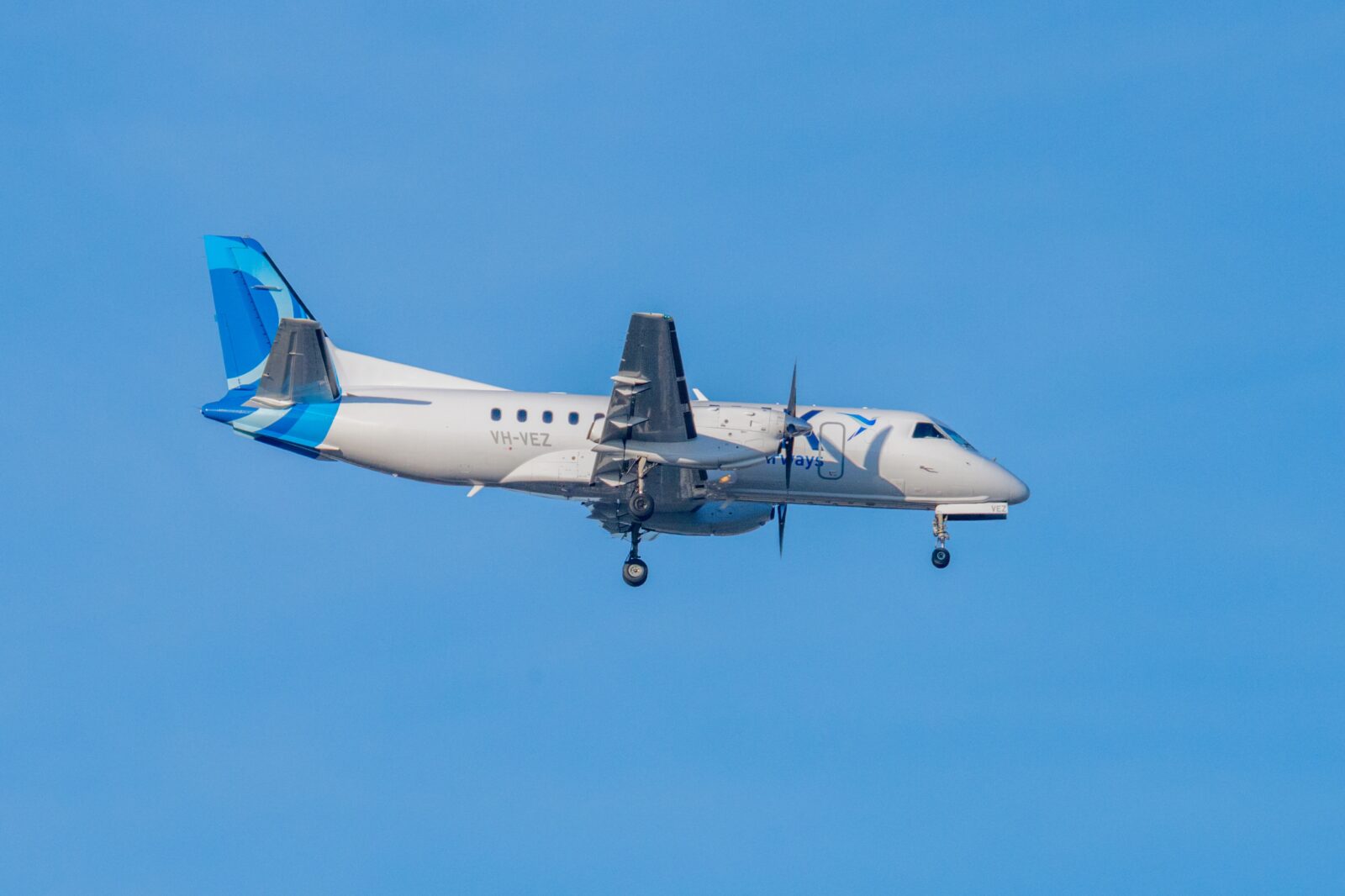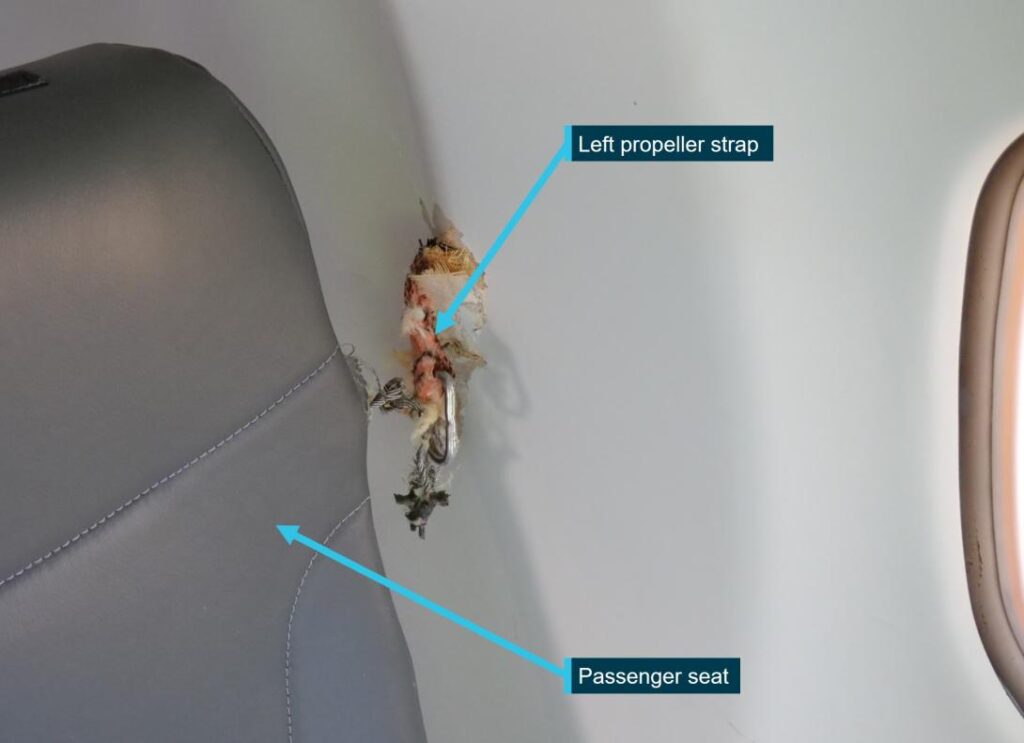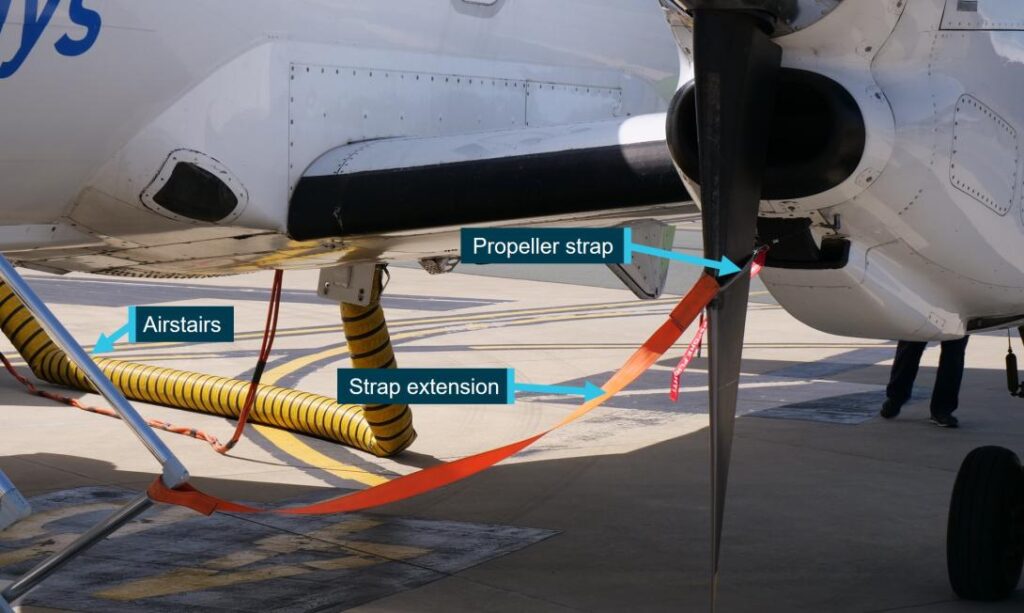
A passenger on a regional flight between Australia’s capital, Canberra and Sydney narrowly escaped serious injury after a bolt from a safety strap was flung into the side of the fuselage from a propeller, puncturing a hole in the metal and penetrating the cabin.
Thankfully, the passenger sustained only narrow bruising as metal parts from the bolt flew off and hit the victim shortly after takeoff. The accident occurred in November 2022, but the serious nature of the incident has only now come fully to light after the Australian Transport Safety Bureau published its final report into the incident.

Accident investigators say the accident could have been avoided if the pilots and ground staff had followed standard operating procedures, while the airline has also come under fire for not maintaining its equipment properly or training outsourced ground staff to a high enough standard.
The incident occurred on a small turbo proper Saab 340B regional aircraft with capacity for just 34 passengers operated by Link Airways on behalf of Virgin Australia.
Because the passenger boarding door is so close to the left-hand propeller, a strap is fitted to the propeller to stop it from ‘windmilling’ while passengers are passing close by. The strap should then be removed before takeoff but just before flight VA633 on 10th November 2022, the pilots and ground staff failed to remove this strap.
The aircraft managed to takeoff as normal, but during the initial climb, the safety strap was flung off the propeller, and a metal bolt that is used to attach the strap to the aircraft penetrated the fuselage, narrowly missing a passenger.
Passengers and cabin crew were alerted by a loud bang, and the cabin crew manager quickly called the pilots to tell them something was up, although failed to explain what had actually happened.

Accident investigators were called in and discovered that several safety measures designed to prevent this type of accident had been skipped. For example, a ‘remove before flight’ warning flag that was meant to hang down from the safety strap to make it obvious that the strap was still attached was not present.
In addition, a second strap was meant to be attached between the safety strap and the aircraft door. The general purpose of this second strap, known as the strap extension, was to prevent passengers from walking underneath the aircraft, but a secondary benefit was that the aircraft door couldn’t be closed without first removing the strap.
It turns out, however, that the First Officer failed to fit the secondary strap.
Ground staff may have been able to spot the obvious problem if they had received adequate training, but the airline had not given the outsourced ground handling company information about the appearance, function and importance of the propeller straps.
As part of the inquiry, investigators found that one-third of Link Airways flights didn’t have the secondary safety strap attached as prescribed, suggesting this was a pretty common occurrence.
“When there are multiple risk controls in place and multiple responsible parties, it is easy to become complacent from an expectation that earlier checks have been done correctly and that future checks elsewhere in the system will likely catch anything missed,” commented ATSB Chief Commissioner Angus Mitchell.
“It is critical that all involved parties have a complete understanding of their roles and responsibilities and how they fit together to create a safe and functional operating environment,” Mitchell continued.
Link Airways says it has already updated its procedures, replaced missing flags and provided additional guidance to its ground handling provider.
Mateusz Maszczynski honed his skills as an international flight attendant at the most prominent airline in the Middle East and has been flying ever since... most recently for a well known European airline. Matt is passionate about the aviation industry and has become an expert in passenger experience and human-centric stories. Always keeping an ear close to the ground, Matt's industry insights, analysis and news coverage is frequently relied upon by some of the biggest names in journalism.







